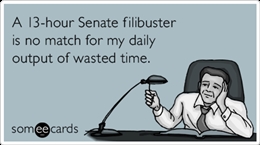
Private Lender ‘Mind Control’ – The Up Front Agreement
 Hey guys, one of the things I’ve been giving away here on my PMBP blog for years and years is my Private Money PowerPoint Presentation. It’s actually the same presentation I use in my business, I’ve given it away on a bazillion blog posts and, because it fits my post today so well, I’m gonna let you scoop up.
Hey guys, one of the things I’ve been giving away here on my PMBP blog for years and years is my Private Money PowerPoint Presentation. It’s actually the same presentation I use in my business, I’ve given it away on a bazillion blog posts and, because it fits my post today so well, I’m gonna let you scoop up.
All you have to do is customize it for your business and… use it. Pretty simple, right?
So naturally, since around here we talk about the art and science of getting private money, we tend to talk a lot about that presentation and also the sales process that’s involved in – actually, embedded in, that presentation…
It’s a very specific process, and in our home study course, I walk through that step-by-step explaining the presentation slides of that specific process.
There’s another critical step of the sales process … it’s truly powerful, but I haven’t really talked much about it. It’s called the Up Front Agreement.
And so today, I’m going to cover that concept and structure in this post.
So let’s get to it…
The Up Front Agreement
This is where you set some rules for your meeting and relationship.
It also allows you to take control of the meeting, shows respect to the prospect and makes sure there is a clearly defined next step (a way to move forward) once the meeting is over.
There are 5 components of the Up Front Agreement:
1) Appreciation
People crave appreciation, right? We’re human. So you’ll start off by saying, “I would like to thank you for meeting with me today. I really appreciate your time.” Pretty simple, but very effective to get things started right.
2) Time
Next, you’ll ask, “How much time do you see us spending together today?”
 If they say they don’t know, tell them that it typical takes about 45 minutes to an hour for the presentation – and you want to make sure that timeframe works for them.
If they say they don’t know, tell them that it typical takes about 45 minutes to an hour for the presentation – and you want to make sure that timeframe works for them.
You can also ask: “Do you have any other commitments that I should know about?”
If the prospect is on a specific time schedule, it’s important for you to know, so you can stay on track and on time for their schedule.
Manage expectations… if there is not ample time for you to present, it’s best to reschedule.
3) Their Agenda/Your Agenda
You’ll first focus on the prospect’s agenda before transitioning into your agenda:
“What would you like to cover today?”
By asking the prospect what they would like to cover shows that the presentation isn’t just about you, it’s about them. You’re showing respect for the prospect’s questions and concerns, but you’re also getting an idea of where the prospects thoughts are at, at this point.
Write down what they would like to cover and say, “Great questions. If I do not cover these through the remainder of the presentation, I’ll make sure to at the end. Does that sound good?”
Then say, “Well, I have some questions too because I’m not sure if you would be right for our program. Are you okay if I ask you some questions about your investing experience, expectations and future investment goals?”
And then transition into…
4) Define Reluctant Role
Okay, this one is extremely powerful and important…
It may seem counterintuitive, but I challenge you to follow the script.
By playing the reluctant role, you’ll actually make prospects want to work with you by nearly disqualifying them using a variation of: “We’re probably not a fit.”
You’ll actually being putting them in the mindset that gets them thinking… ‘Well, why wouldn’t I be a good fit? Of course, I am… so I’ll show him I want the opportunity.’ People often want what they’re told they can’t have…and you want to put them in that position.
So you’ll say, “You know… I may figure out through asking you some questions that we’re not really a good fit to work together. If I figure that out before you, are you okay if I tell you?”
Then say, “Good. At the same time, if you figure out that the program isn’t for you, will you just tell me?”
Here’s another thing to think about…
It’s been my experience that after the presentation, if a prospect says, “Let me think it over” or “Call you next week,” then they’re not interested. It’s their polite way of saying they don’t want to participate.
So, to avoid that potential issue, you’ll bring this up and say, “You’ll let me know if that’s the case, right?” Neither of you wants to waste the other’s time. Make it clear that you’ll be getting a firm ‘Yes’ or ‘No’ at the end of the presentation.
5) Clearly Defined Next Step
Final step in this structure…
 Leave no room for miscommunication, be very clear here…
Leave no room for miscommunication, be very clear here…
You’ll say, “Who knows? We may find that we are a fit to work together by the end of today. We’re not anywhere near there right now, but if we did, what would you see us doing next?”
This allows them to come up with the plan and the next steps to take, so they’re basically selling themselves into this.
Done and done.
Summing Up the Up Front Agreement
By using the script for the Up Front Agreement you will have:
- Shown respect to the prospect through appreciation and time.
- Found out exactly what the prospect wants to cover (this ensures you handle any current objections in their mind).
- Had the prospect agree to giving you a “yes” or “no” at the end of the presentation. And, if the answer is “yes,” you made it their idea as to the next step.
The Up Front Agreement is very powerful…
Use it and find out for yourself.
 I’m Listening…
I’m Listening…
Have you tried my Up Front Agreement script? Tell me how it worked for you in the s


